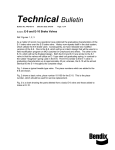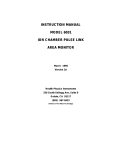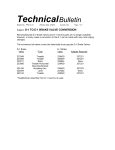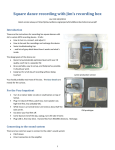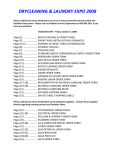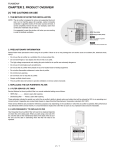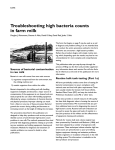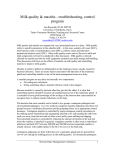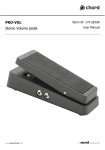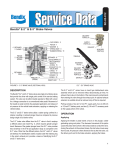Download BENDIX TCH-003-030 User's Manual
Transcript
Technical Bulletin Bulletin No.: PRO-03-30 Effective Date: 1/1/91 Page: 1 of 3 Subject: E-1 Single Circuit Brake Valve Obsolescence And Changeover When our current stock of E-1 brake valves is depleted, this valve will no longer be available for service replacement, either as new or remanufactured exchange. Because of this obsolescence, those vehicles currently using the E-1 single circuit brake valve will be required to changeover to a currently produced brake valve. Background The E-1 brake valve is of single circuit design and was primarily used on pre-1975 transit and parlor coaches because of its generous graduating range. The larger graduating range of the E-1 requires greater treadle movement per pound of air pressure delivered. This fact results in the driver being able to more easily control small increases or decreases in braking pressure which is sometimes desirable in coach operation. Changeover Options While several changeover options are possible the most appropriate are: 1. The E-1 can be replaced with the E-3 single circuit brake valve. 2. The E-1 can also be replaced with the E-10 dual circuit brake valve. Each changeover option has some positive and negative aspects to be considered before a choice is made. E-1 to E-3 Changeover Advantages This changeover is the most easily accomplished since the existing vehicle air lines, along with the treadle and mounting plate may be reused. The E-3, like the E-1, is a single circuit brake valve. It is substantially shorter than the E-1 and is no larger in diameter and therefore should present little or no physical fit problems. The E-3 is equipped with four ½” PT delivery ports and two ½” PT and two ¼” PT supply ports. The E-1 is equipped with a single ½” PT supply and four ½” PT delivery ports. Refer to Figures 1 & 3. Reference catalog pages 03-C-2 & 3 for the E-1 and 03-E-1 to 4 for the E-3. Disadvantages The E-3 has a smaller graduating range than the E-1 and is therefore somewhat more “sensitive” to treadle movement and hence delivery pressure increases and decreases. The driver may perceive the E-3 brake valve as more sensitive or “touchier”. E-1 to E-10 Changeover Advantages The E-10 dual circuit brake valve may be used to replace single circuit E-1 without converting the entire coach to a dual brake system. The E-10 is the current standard on many coaches today and more closely approximates the brake “feel” provided by the E-1. The existing treadle and mounting plate can be reused on the E-10. Refer to Figures 2 & 3. Reference catalog pages 03-C-2 & 3 for the E-1 and 03-J-1 & 2 for the E-10. Disadvantages Since the E-10 is a dual brake valve some piping changes will be required. The single air supply line which was connected to the E-1 must be branched into two lines and connected to the separate primary and secondary supply ports of the E-10. In addition, the delivery line leading to the coach rear axle brakes MUST BE CONNECTED TO THE PRIMARY DELIVERY PORT OF THE E-10. The delivery line leading to the coach front brakes should be connected to the secondary delivery ports on the E-10. The air delivery connections specified are required due to the inherent 4 psi differential in delivery pressure between the primary and secondary circuits of a dual brake valve. The E-10 is approximately 2 inches longer than the E-1, and is no larger in diameter. There must be adequate clearance below the existing E-1 in order to install the E-10. The E-10 is equipped with four 3/8” PT delivery ports and four 3/8” PT supply ports (two supply and delivery ports for each circuit). The E-1 is equipped with a single ½” PT supply and four ½” PT delivery ports.




